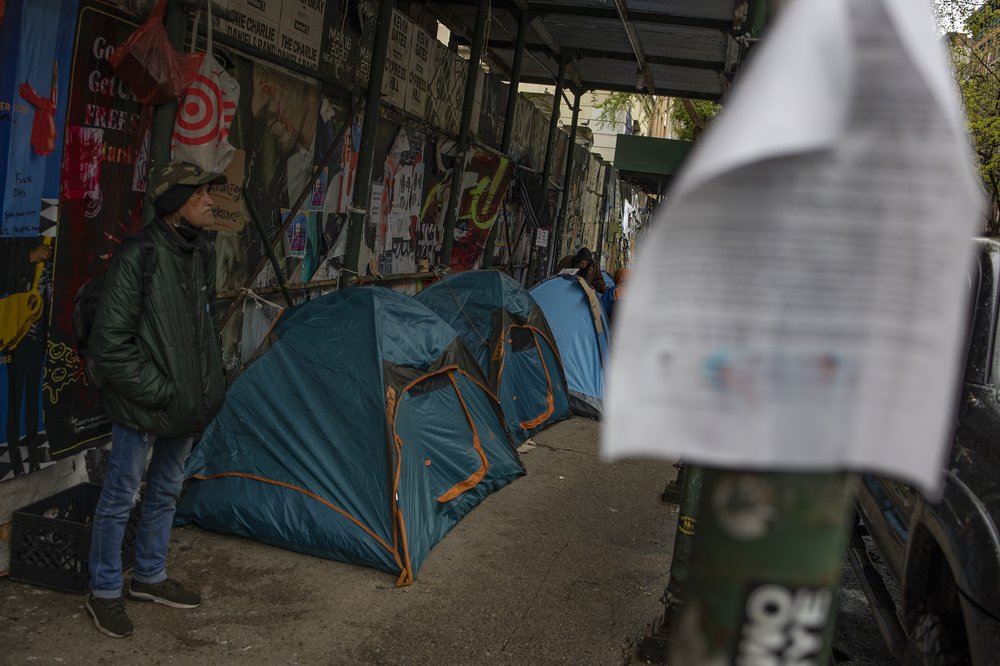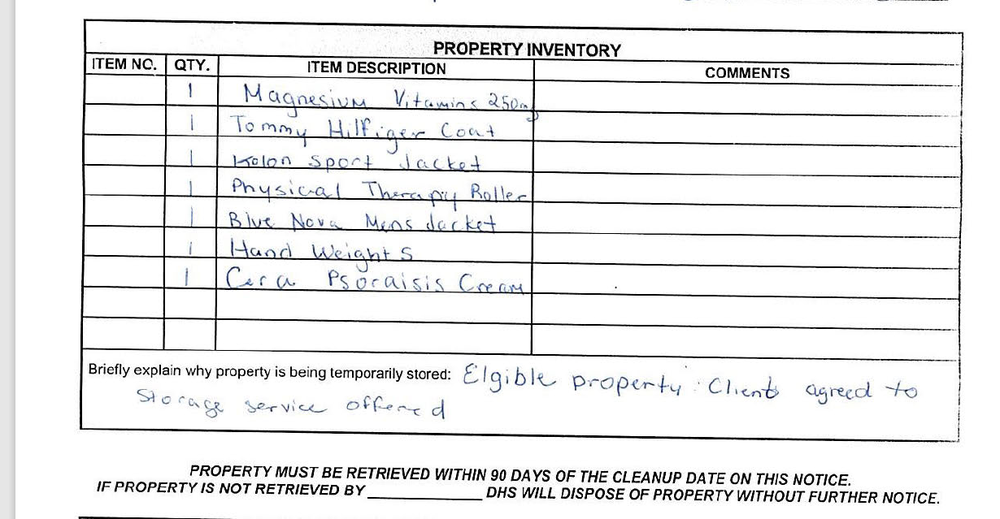IDs, coats, a microwave: the few items stored during NYC homeless encampment sweeps
June 15, 2025, 9:01 a.m.
The city is supposed to offer homeless people a chance to store their items during sweeps.

A health insurance card, a 10-speed mountain bike, a blue men’s jacket and a microwave are among the few belongings stored by New York City officials this year after they cleared homeless people from street encampments.
The city is supposed to offer people the chance to store their personal items for 90 days. But a City Hall spokesperson said workers stored people’s belongings just 13 times between January and the end of May this year. The city would typically have conducted several hundred sweeps in that time.
“ That's a shocking number that should raise a lot of red flags,” said Dave Giffen, executive director of the Coalition for the Homeless. “There are so many people that the city is sweeping.”
The Adams administration said it was still finalizing counts of how many sweeps it conducted from January to May of this year, which it must disclose quarterly as required under a new law. But over the same period in 2024, it conducted an average of 200 sweeps per month.
Gothamist obtained records through a Freedom of Information law request showing the list of items stored when city workers fill out a “cleanup site voucher” during a sweep.
Homeless advocates say the low number of vouchers underscores the fact that most people’s things are often thrown in the trash. They say it demonstrates how destabilizing sweeps are to homeless people who can lose identification cards, personal mementos, clothing and other items. It comes as the street homeless population increased to 4,100 last year and as more New Yorkers who aren’t migrants are entering the shelter system.
“As Mayor Adams has said, there is no dignity in living on the street and we have a moral obligation to help our fellow New Yorkers rather than walk by them and do nothing,” City Hall spokesperson William Fowler said. “In most cases, people choose to take their belongings with them and only leave behind what they do not wish to keep.”
Sweeps are executed by city workers from several agencies including parks, sanitation, NYPD and homeless services who clear tents, cardboard boxes or encampments and offer services to homeless people on site. City data shows over the course of nine months last year, 3,500 people were displaced during the sweeps, with 114 being placed in shelter.
“Sweeps can happen when people aren’t there, and are either going to their program, using the bathroom, getting something to eat. And they come back and their stuff is gone, their whole life is gone,” said Graciela Razo, director of the drop-in center at VOCAL-NY, an advocacy group for low-income New Yorkers.
Razo said she works with many street homeless individuals who need help getting new identification cards because their old ones were tossed during sweeps. She said she didn’t know the city offered people vouchers to store their items — and many of the homeless people she helps don’t know either.
According to city policy, workers from the Department of Social Services are supposed to explain the cleanup process to those being removed, advise people to hold on to their important documents and “use best efforts” to voucher eligible property. Animals, weapons, combustible products, furniture or illegal items are not eligible for storage, the policy states. If no one is present during a sweep DHS workers must store property that is identifiable and has a name such as an identification card.
Of the nine vouchers obtained by Gothamist through a public information request, one was filled out in January, two in February, one in March and five in April. The items included: a tote bag with Lego pieces, cream for psoriasis, hand weights, magnesium vitamins, a laptop, eight bags of clothes, business cards, a Chase bank card, a shower curtain, a belt, a phone, medication bottles and an umbrella, the records show.

“Even if offered storage, most homeless people would prefer to move with their belongings and keep them,” said Helen Strom, director of benefits and homelessness at the Safety Net Project. “In the small number of cases where items are stored, it would be quite difficult for people to retrieve this critical property, especially if someone doesn’t have a phone or way to coordinate with the city.”
In October, six homeless New Yorkers and the Urban Justice Center’s Safety Net Project sued the Adams administration in federal court, alleging the sweeps violated people’s due process and protections against unreasonable searches and seizures. In response to that suit, a judge said the city had to give at least seven days' notice before a location is swept and provide a list of locations to the advocacy group suing them.
‘Nowhere to go’: More New Yorkers are entering city homeless shelters, report says NYC says it moved 3,500 people out of homeless encampments, but just 114 into shelter